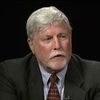There have been plenty of postmortems on the Republican presidential debate last week. But before the debate fades further into history, at least one of the issues the candidates touched upon deserves deeper background. Some voters who will cast ballots next year were not alive when the issue first appeared 30 years ago.
I am referring to a global environmental challenge that came up during the administration of President Ronald Reagan. It is an example of how a different Republican at a different time handled a comparable environmental issue far more responsibly than the Republicans who want to occupy the White House today. The issue was the deterioration of the atmosphere's ozone layer.
Toward the end of last week's debate, CNN's moderator, Jake Tapper, pointed out that George Shultz, who was Reagan's Secretary of State, has come out in favor of climate action. Shultz suggests that the GOP deal with global warming in the same way that Reagan dealt with the ozone problem: He decided to help insure the world against the crisis by taking action.
Here is how it happened. The ozone layer, which starts about 6 miles above the Earth's surface, absorbs as much as 99% of the sun's ultraviolet rays. That's important because too much UV radiation is harmful to all life; in humans, it causes cataracts, skin cancer and even genetic damage.
In 1985, three scientists announced they had discovered that the ozone layer was damaged above the Antarctic. It had grown thin in an area about the size of the United States. The cause appeared to be the release of chemicals called chlorofluorocarbons (CFCs), used mostly in industrial cleaning and refrigerants.
This problem was similar to climate change in several ways. First, the scientists' findings triggered a debate about whether the hole was the result of natural causes or CFCs. Second, the crisis was global in scope. Even though it was caused by industrial nations, all nations would have to agree to a ban on CFCs. Third, the companies that produced CFCs - the largest was DuPont -- initially fought the idea of a CFC ban on grounds that the science was not certain.
In an article in the Washington Post earlier this year, Shultz recalled what happened next:
Many scientists thought the ozone layer was shrinking. There were doubters, but everyone agreed that if it happened, the result would be a catastrophe. Under these circumstances, President Ronald Reagan thought it best not to argue too much with the doubters but include them in the provision of an insurance policy.
With the very real potential for serious harm, U.S. industry turned on its entrepreneurial juices, and the Du Pont company developed a set of replacements for the chemicals implicated in the problem along a reasonable time frame and at a reasonable cost. It came up with something that could be done then -- not some aspirational plan for 2050.
Action is better than aspiration. As matters turned out, the action worked and became the basis for the Montreal Protocol, widely regarded as the world's most successful environmental treaty.
Today, the Montreal Protocol has been signed by more than 190 countries. NASA reports that the damaged area of the ozone layer is shrinking and could be healed by the end of this century.
As EPA explains, "The Montreal Protocol has been successful because of scientific accuracy, effective public policy, and market-based, flexible, innovative approaches to ensuring ozone layer protection and developing alternatives." It is the same formula we need to confront global warming.
Shultz continued:
In retrospect, the scientists who were worried were right, and the Montreal Protocol came along in the nick of time. Reagan called it a "magnificent achievement." We all know there are those who have doubts about the problems presented by climate change.
But if these doubters are wrong, the evidence is clear that the consequences, while varied, will be mostly bad, some catastrophic. So why don't we follow Reagan's example and take out an insurance policy?
The "insurance policy" that Shultz recommends is to get rid of all energy subsidies and to mobilize market forces with a revenue-neutral tax on carbon.
Tapper asked what the candidates thought about that. Gov. Chris Christie's response was, "Listen, everybody makes a mistake once in awhile. Even George Shultz."
But Shultz is correct. The mistake is being made by the field of Republican presidential candidates pandering to those in their base who deny that climate change even exists and that even if it did, the United States cannot do anything about it.
I'll explore the latter idea -- that America can't do anything about it -- in Part 2 of this post.
Blogger's Note: For a more detailed study of DuPont's role in solving the ozone problem, see "There's Money in the Air: The CFC Ban and DuPont's Regulatory Strategy".
